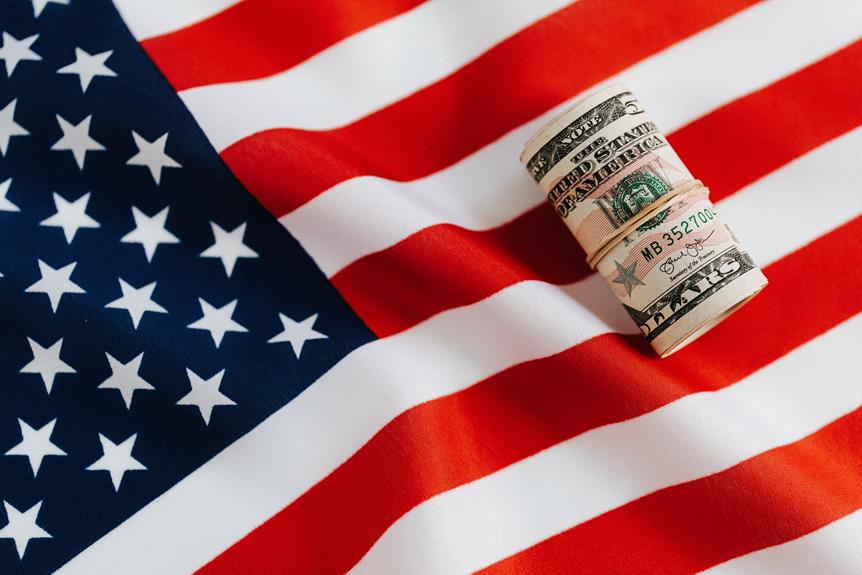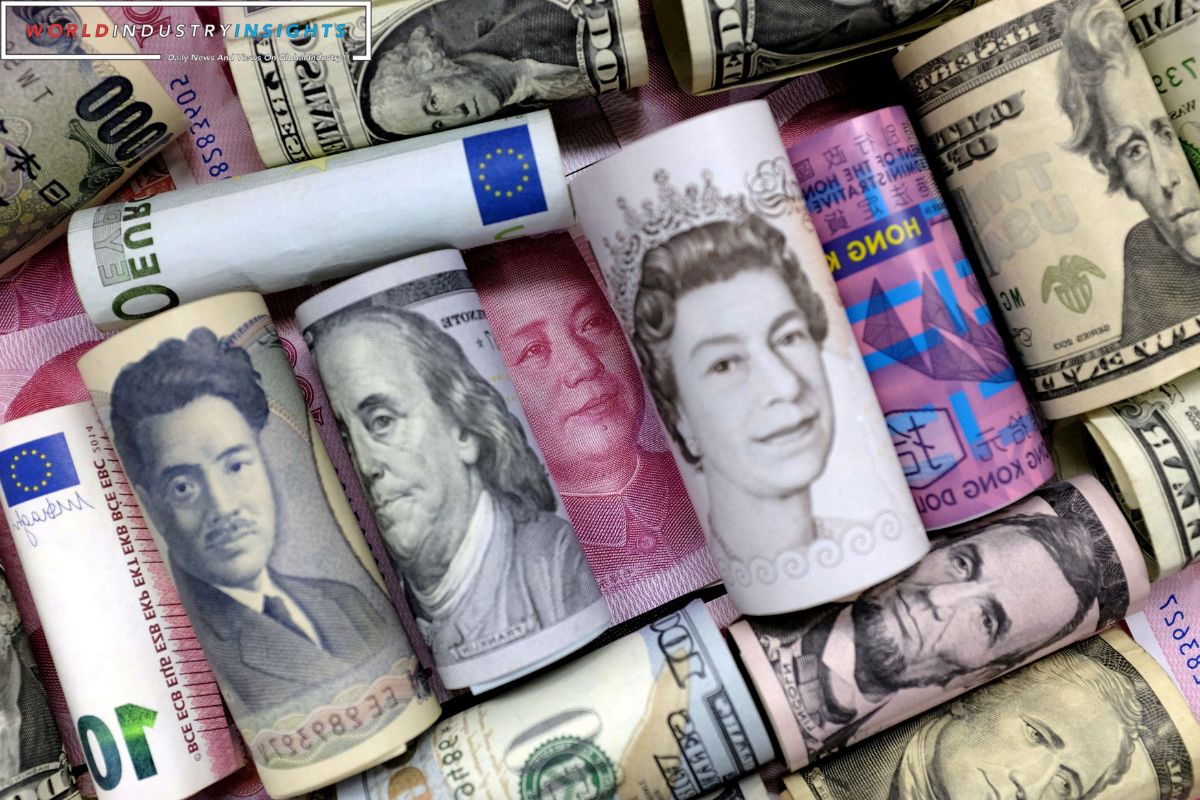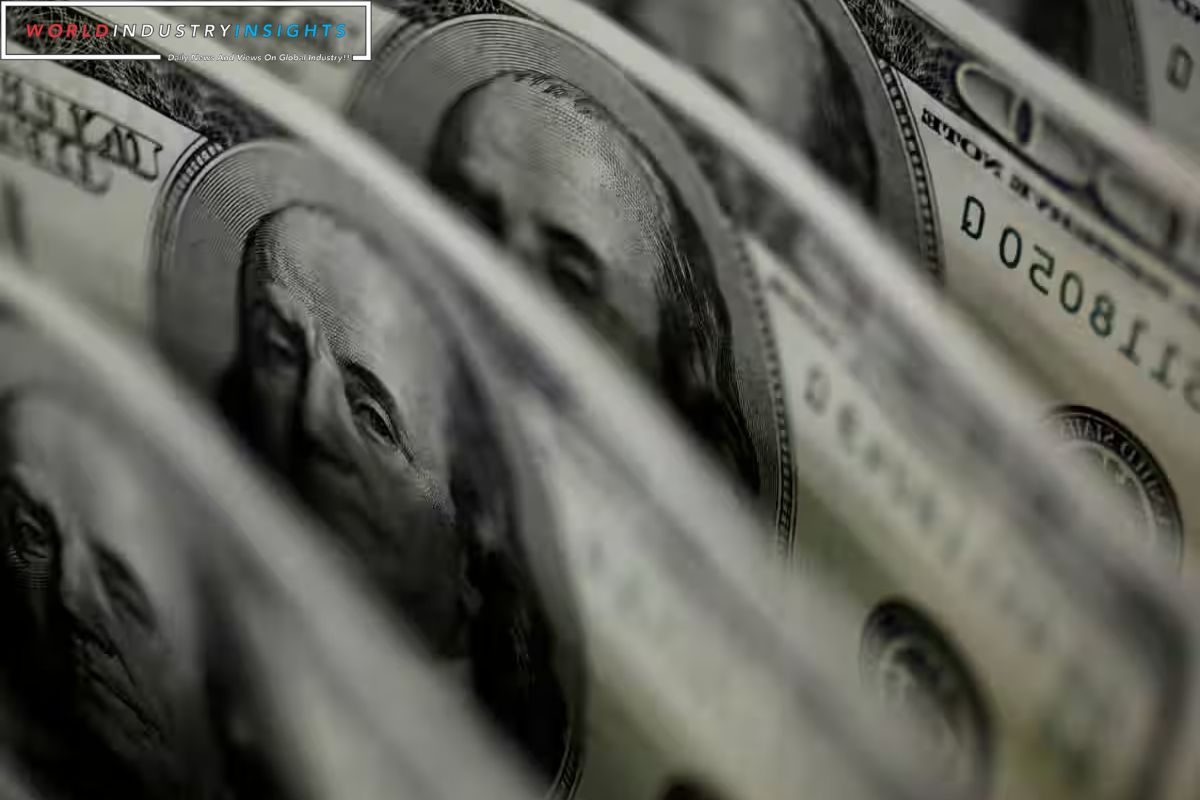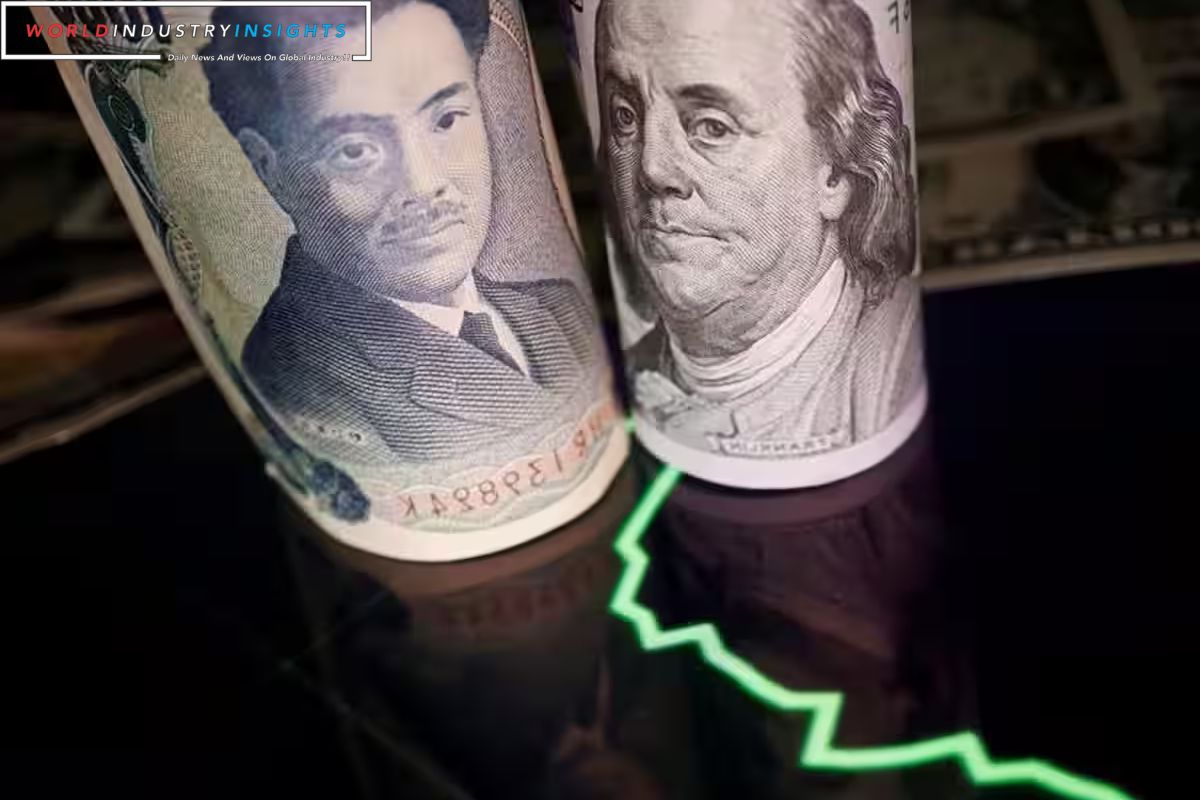US Dollar Surges Against Yen: The US dollar has experienced a significant surge against the Japanese yen as the market carefully evaluates the prospects of an optimistic interest rate environment. This development has captivated the attention of investors seeking to master the intricacies of the currency market.
The exchange rate between the US dollar and the Japanese yen has been closely monitored, with implications for global stock market performance, oil prices, disruptions, US Treasury yields, gold prices, and other currency movements and economic indications.
This article aims to provide a concise and professional analysis of the recent surge in the US dollar against the yen, shedding light on the factors driving this trend and the potential impact on various financial markets.
Key Takeaways
- The US dollar surged against the Japanese yen by 0.79% to 143.90 per dollar.
- The Bank of Japan’s decision to maintain its dovish policy guidance contributed to this movement in the exchange rate.
- Market participants are analyzing the impact of rate optimism on the exchange rate.
- Understanding the factors influencing the exchange rate is crucial for informed currency trading decisions.
US Dollar and Japanese Yen Exchange Rate
The exchange rate between the US dollar and the Japanese yen is currently being analyzed by market participants as they consider the impact of rate optimism.
Also Read: US Dollar Faces Downward Pressure as Fed Adopts Softer Stance
On Tuesday, the US dollar surged against the yen, with the yen weakening by 0.79% to 143.90 per dollar. This movement in the exchange rate is a result of the Bank of Japan’s decision to keep rates steady and maintain its dovish policy guidance.
The market participants are weighing in the rate optimism, which suggests a positive outlook for the US dollar in relation to the yen. This analysis is important for investors and traders who are looking to make informed decisions about their currency trades.
It is crucial for them to understand the factors influencing the exchange rate between the US dollar and the Japanese yen to maximize their potential gains or minimize their risks.
Global Stock Market Performance
Amidst the positive performance of global stock markets, the MSCIs global stock index and the S&P 500 have seen steady growth. This indicates a strong investor sentiment and optimism in the market.
Here are four key highlights of the current global stock market performance:
- Dow Jones Industrial Average: The Dow Jones Industrial Average witnessed a significant increase of 251.9 points, reflecting the positive momentum in the US stock market.
- Nasdaq Composite: The Nasdaq Composite also experienced a notable uptick of 98.03 points, indicating a strong performance of technology stocks.
- MSCI Global Stock Index: The MSCI Global Stock Index has been rising steadily, indicating a broader positive trend in the global equity markets.
- S&P 500: The S&P 500, one of the most widely followed stock market indices, has also shown consistent growth, reflecting the overall strength and resilience of the US market.
These developments suggest a favorable outlook for investors and highlight the robustness of the global stock markets amidst the current economic landscape.
Oil Prices and Disruptions
Oil prices have risen due to recent disruptions caused by attacks on ships by Yemen’s Iran-aligned Houthi militants. These attacks have not only disrupted maritime trade but have also forced companies to reroute their vessels, leading to increased costs and supply chain disruptions.
As a result, oil prices have experienced an upward trajectory, with US crude settling up 1.34% at $73.44 per barrel. This rise in oil prices has significant implications for the global economy, as it affects various sectors such as transportation, manufacturing, and energy. Higher oil prices can lead to increased costs for businesses and consumers, potentially impacting inflation rates and economic growth.
Moreover, geopolitical tensions in the Middle East, such as the conflict in Yemen, continue to pose a risk to oil supply and further disruptions, which could further impact oil prices in the future.
US Treasury Yields and Gold Prices
With US Treasury yields edging lower, market optimism over interest rates is driving a surge in the US dollar against the yen. As investors closely monitor comments from Federal Reserve officials for indications on interest rate cuts, four key observations can be made regarding US Treasury yields and gold prices:
- Lower US Treasury yields: Despite remaining above multi-month lows, US Treasury yields have dipped slightly. This decrease in yields reflects market expectations of potential interest rate cuts by the Federal Reserve.
- Strengthening US dollar: The surge in the US dollar against the yen can be attributed to the market’s positive sentiment surrounding interest rates. As yields edge lower, investors are drawn towards the US dollar, perceiving it as a more attractive currency.
- Firming gold prices: Gold prices have benefited from the slip in the US dollar and Treasury yields. The inverse relationship between gold and the US dollar means that as the dollar weakens, gold becomes more appealing as a safe-haven asset.
- Bullish gold futures: US gold futures have shown bullish signs, gaining 0.81%. This indicates that investors are increasingly optimistic about the future performance of gold, potentially driven by expectations of lower interest rates and a weaker US dollar.
Other Currency Movements and Economic Indications
As the market weighs in rate optimism, it is important to analyze other currency movements and economic indications.
The euro has seen a 0.5% increase, reaching $1.0977, while sterling has risen by 0.62% to $1.2721. These movements suggest a positive sentiment towards these currencies.
Meanwhile, the US dollar has started the week on a positive note, with the dollar index stabilizing at 103.95. Attention is shifting towards the FOMC policy meeting, with expectations of consumer prices continuing to ease on an annual basis.
In addition, China’s struggles with deflationary pressure have impacted the yuan, leading to the offshore yuan nearing a three-week low. These currency movements reflect the ongoing economic challenges faced by various countries and the resulting impact on their currencies.
Conclusion Of US Dollar Surges Against Yen
In conclusion, the US dollar has surged against the yen as market optimism regarding interest rates continues to prevail. This has been influenced by:
- Positive global stock market performance
- Disruptions in oil prices
- Fluctuations in US Treasury yields
- Gold prices
Additionally, other currency movements and economic indicators have also played a role in shaping the exchange rate between the US dollar and Japanese yen.
Our Reader’s Queries
Why is the yen getting stronger against the dollar?
On Friday, the yen surged, building on its largest gain in almost a year. Traders are increasingly confident that the Bank of Japan will eliminate the world’s only negative interest-rate policy as early as this month. This has led to a consolidation of the yen’s position in the market.
Why is yen surging?
The yen experienced a significant surge, its largest in almost a year, thanks to comments made by Bank of Japan Governor Kazuo Ueda and one of his deputies that traders interpreted as indications of an upcoming interest-rate hike. The foundation for this surge was established in Asia. Additionally, a lackluster Japan bond auction further fueled the fire.
Will yen get stronger in 2024?
According to Keiko Kondo, the head of Asia multi-asset investments at Schroders, the yen is expected to strengthen against the euro in the future. However, Kondo predicts that this appreciation will be mild and gradual, rather than sudden and forceful.
Will the yen go up in 2023?
According to Bloomberg’s forecast, the yen is expected to strengthen against the dollar and reach 135 by the end of 2024. This is due to the narrowing interest gap between the US and Japan. Interestingly, their previous projection from a year ago was overly optimistic, with the pair expected to trade around 131 by the end of 2023.




